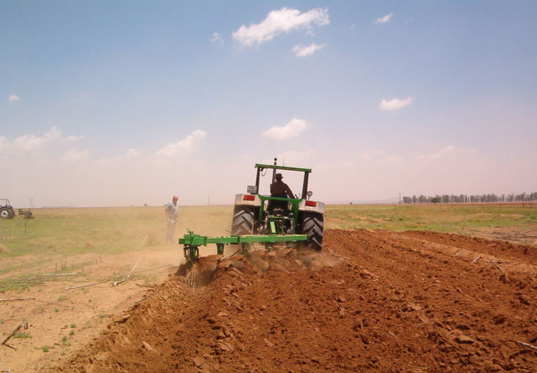Introduction
Field operations are carried out to increase the productivity of soul. Soil tillage is one of those operations. It is one of the most researched topics in agriculture sciences due to its direct impact on crop productivity and soil condition. Jethro Tull is regarded as the father of soil tillage who introduced it during the 18th century. It was considered as an art. However, in recent years, tillage is now being focused as a science on the basis of research evidences. Before going deep in this topic, let us see what soil tillage is.
Soil tillage is the cultivation or preparation of soil for cultivation of crops in a productive soil environment. It is carried out by mechanical manipulation of soil such as overturning the soil, or stirring the soil or simply digging. The aim of tillage is to provide favorable growth conditions of soil to the crops. Soil tillage includes all the types of operations that are practiced for the purpose of modifying the physical character of soil.
In field crop production, it is not wrong to claim that soil tillage is the most time consuming and difficult task to perform. In addition to that, it also consumes large share in farmer’s budget.
Reason of Soil Tillage
The reason of soil tillage is to break the large sized soil particles into finer ones so that readily available nutrients can reach to the crop roots. Moreover, after tillage, surface area of soil is increased that allow good root growth in crops.
It is an interesting fact that tillage operations for soil preparations vary from place to place and even in some cases, in the same area, different tillage operations are carried out. This depends upon the climate of cultivated crops, soil condition etc. A lot of effort is required to turn a virgin piece of land into good seedbed, and tillage operations help in achieving that goal.
Types of Tillage
There are three of types of soil tillage in practice.
- Conventional Tillage
- Conservation Tillage
- No Till
Conventional Tillage
It is the simplest and oldest form of soil tillage in which farmers untie the soil by simply turning it over. This can be done both manually and mechanically. By manually, it is carried out with hoes and mechanically, it is done with a disc or plough. This type of tillage has few drawbacks. One of the most important is exposure of soil to air and water erosion.
Conservation Tillage
It is a method of soil cultivation in which the crop residue of previous year crop is left on the fields before and after planting the next crop. The aim of conservation tillage is to reduce soil erosion and water erosion in the form of runoff.
No Till
No till is also called as zero tillage technique. As the name clearly shows that in this type of tillage, soil disturbance is avoided that is created with the tools such as chisel plows, field cultivators, plow and disk. In addition to this, soil cover is maintained in order to prevent erosion and loss of soil moisture.
Cite this Article in APA Style as:
[box type=”note” align=”aligncenter” ]Rahman, M. A. (2018, February 06). An Introduction to Soil Tillage [Blog Post]. Retrieved from http://aridagriculture.com/2018/02/06/introduction-soil-tillage/[/box]
